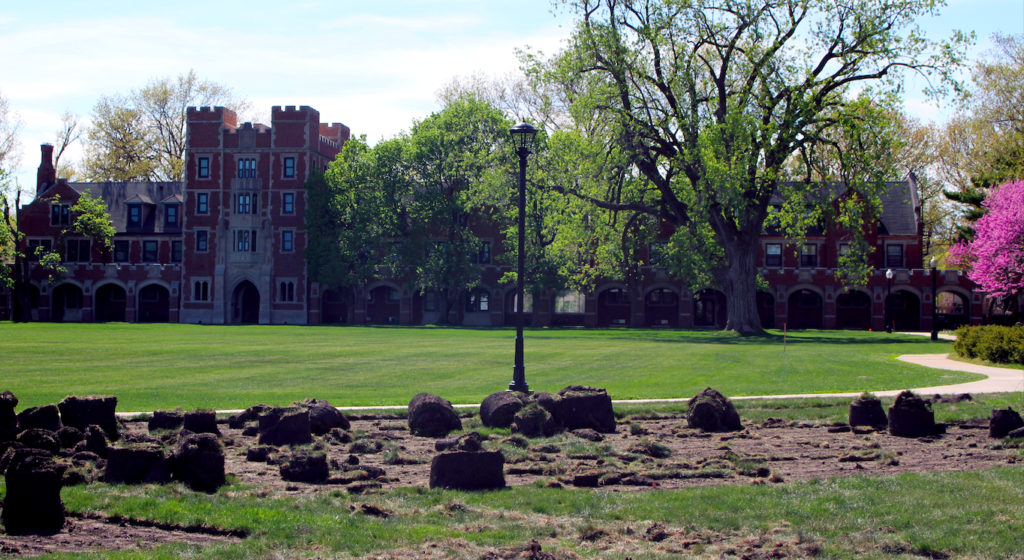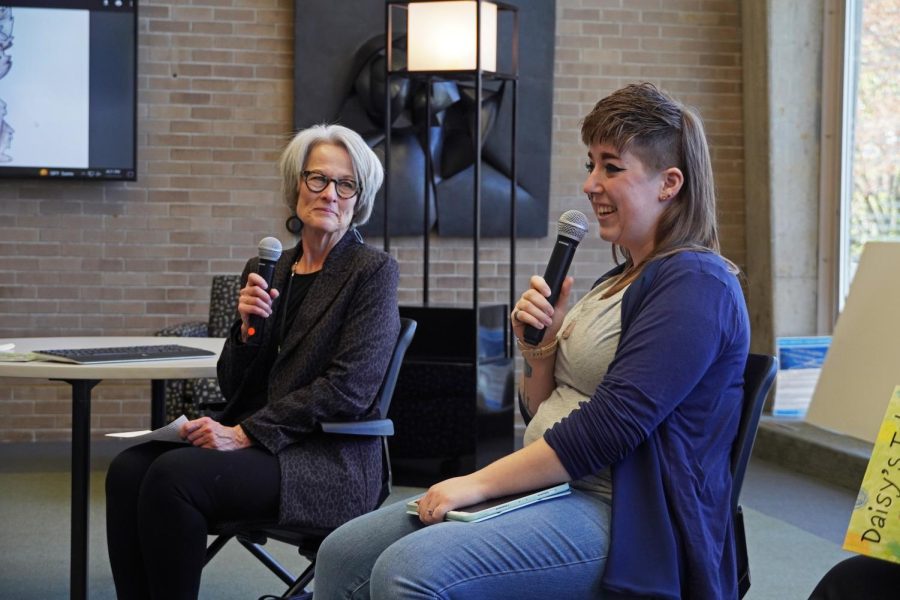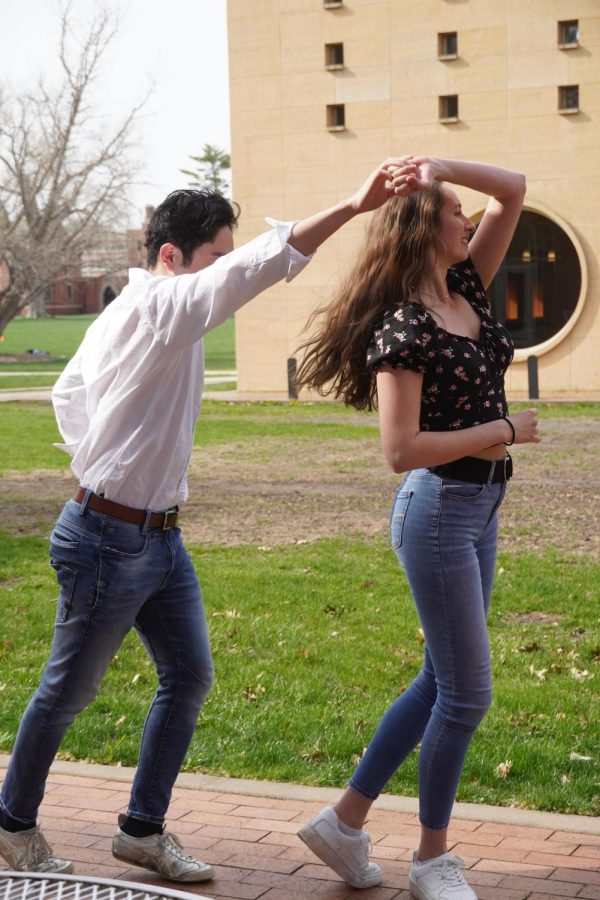A patch of tallgrass prairie is coming to North Campus. Since the beginning of spring, a group of students supported by the Center for Prairie Studies has planned to replace the sod on a patch of Mac Field, the triangle where the sidewalks meet outside of Harris Center, with 6,200 prairie plants.
“The fact that it’s surrounded on all sides by sidewalk makes it easier to maintain and prevent invasive species from getting up inside the prairie,” said Tommy Hexter `21, who helped lead the project.
The location also means that people playing ultimate frisbee and cutting across Mac Field to get to the Dining Hall will not be impacted.
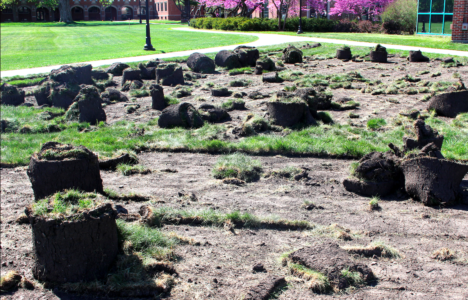
Work started the week of May 1, when a team of students cut out the existing grass using a sod cutter rented by Facilities Management. On May 8, volunteers filled the ground back in using 40 cubic yards of compost from Metro Waste Authority, which creates compost using municipal food waste from the Des Moines area. This weekend, the space will be ready to be planted with the 6,200 plants.
Students will be doing all the work, as well as assuming maintenance for the existing patches of prairie east of the Bear and in front of Macy House, so the new planting will not mean more work for Facilities Management. “FM hasn’t had the resources to maintain a wide diversity of plant types,” said Rachel Snodgrass `21. “They’re really stretched thin and caring for just one plant species or some very contained and manicured plantings is a lot easier.”
This initiative is part of a larger cultural struggle to challenge aesthetic values that privilege capitalist modes of control and extraction over the health of plants, animals and humans. -Caroline Shea ’22
The main work until the new prairie plants get established will be weeding, to prevent the old grass from returning or other weeds from moving in. Another common form of long-term prairie maintenance is fire. Because the triangle of land is contained by sidewalks, Hexter said students hope that a controlled prairie burn can become a traditional event on campus.

The project is the result of a student initiative submitted by Caroline Shea `22. “This initiative is part of a larger cultural struggle to challenge aesthetic values that privilege capitalist modes of control and extraction over the health of plants, animals and humans,” Shea wrote in an email to The S&B.
The project has been organized through meetings with President Anne Harris, Facilities Management and the Center for Prairie Studies, among others.
Professor Lee Running, the director of the Center for Prairie Studies, connected student organizers with Kelly Norris, a horticulturist who ended up designing the installation. Students presented a list of plants they’d like to include, such as echinacea and prairie smoke, and Norris developed a final list of plants, as well as lending his expertise to tasks such as removing the existing sod.
“He’s been able to fill it out in such a way that it’ll have color all season long, varying heights and different leaf types so there’s texture in the prairie,” Hexter said. “That kind of nitty gritty detail stuff of knowing what to put where has been really important.”
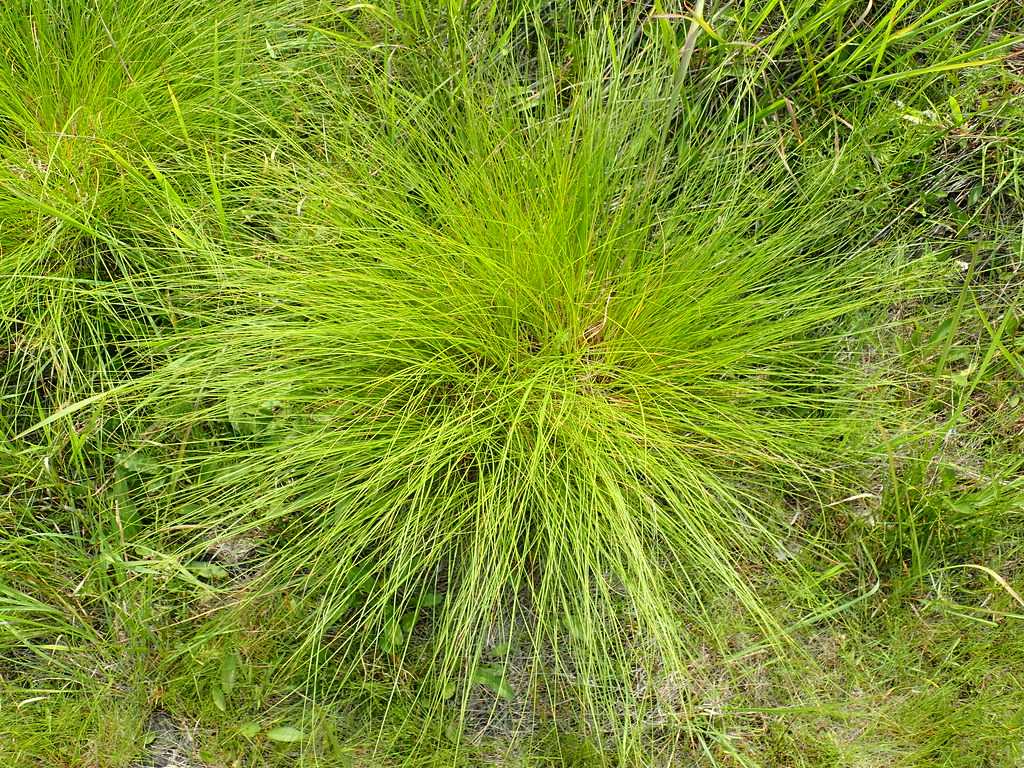
The main plant present will be prairie dropseed. “It has kind of a foamy, diaphanous kind of inflorescence and so you’ll have a real hazy, cloudy feeling almost as if these colors and these textures from these other plants are suspended within it,” Norris said.
Replacing lawns with native prairie is significant both from an ecological and a political perspective. “Compared to lawn grass, native tallgrass prairie plantings improve biodiversity, soil nutrient density and carbon absorption. They prevent erosion, require less water and support pollinators along with a diversity of microorganisms and insects,” Shea wrote.
Despite the greenness of Iowa’s landscape, it is considered one of the most industrialized in the world because its miles of corn and soybeans are so far from the tallgrass prairie that used to cover the land.

One traditional word for this kind of project is “rewilding,” but that term ignores how much of the prairie the Europeans encountered was not truly “wild,” but rather a result of intentional management by Indigenous people. “Too often in prairie restorations I feel like native peoples are just not mentioned, not thought about, not acknowledged, so I really want that to maintain as a key focus of the project as well,” Snodgrass said.
The current aesthetic of most of Grinnell’s campus – close-cropped green lawns scattered with tall trees – imitates how Ivy league schools look, which in turn imitate how Oxford University looks. The organizer’s of this project seek to push against that aesthetic.
“It has these feelings of, like, elite-ness and academia and it’s very removed from the prairie and from Iowa and from the native ecosystems here and what plants grow here,” Snodgrass said. “[This project] is a big step toward making Grinnell’s campus represent the area where we are and not some artificial image of what academia should look like.”
Although the patch of plants imitates the native prairie, Norris still designed it with human viewers in mind. “I’ve been practicing in this way for most of my career and in my life, inspired as much by plants in gardens as I have by plants in wild places,” Norris said. “I’ve always tried to find the harmony between those two conditions and really celebrate the reality that those things don’t have to be separate. The character of plants in wild places can be celebrated in places cultivated as gardens.”


















































